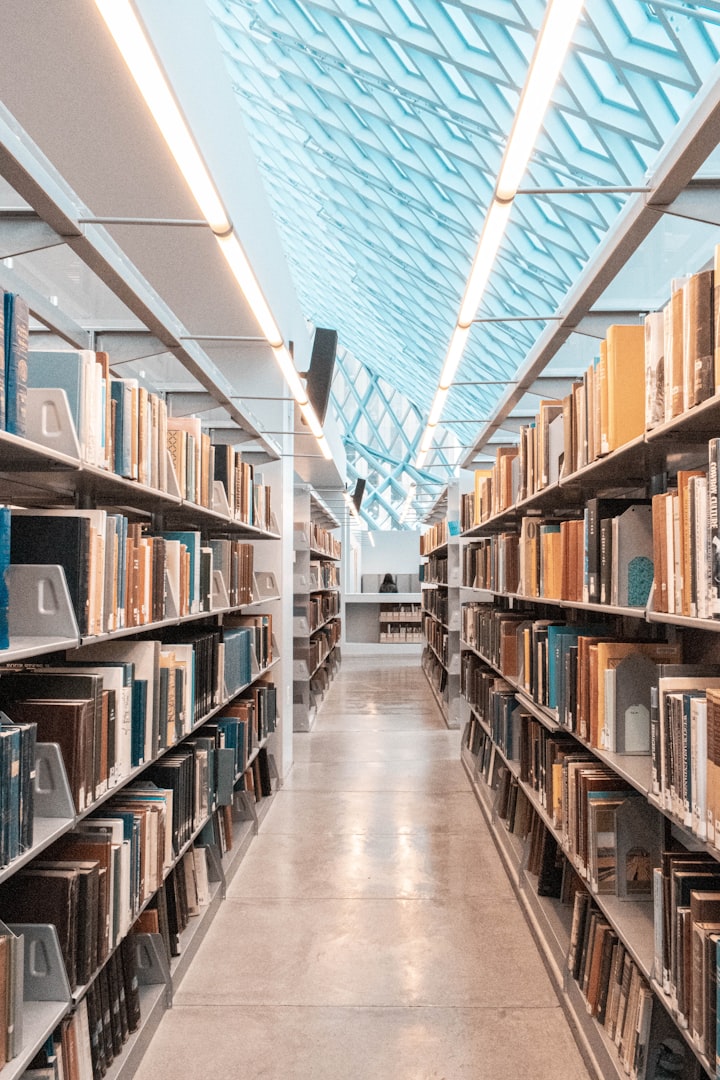Second Hand Social Media (and the Power of Libraries)
This post refers to a much smaller harm social media, that is, its second hand consumption.

I was sitting in a branch of the Toronto Public Library, studying. A girl sat across from me. And for the 2 hours that we shared a table before she left, her study materials served only as a placemat for her cell phone as she scrolled through her Instagram feed without pause. I was once her so I do not judge; I just needed a way to introduce my argument.
There is a cost to social media usage. This cost includes decreased in-person interactions, the championing of an Instagram storybook existence, time, excessive group think and the manipulation of this phenomenon for harm, death (e.g., Sanctioned Suicide).
But this post isn't about all that. Its title refers to a much smaller expense of social media, that is, its second hand consumption. An imperfect analogy can be drawn smoking, which harms the smoker and the person positioned close enough to inhale second hand smoke. Likewise, social media consumption has the potential to harm not just the individuals who choose to sit on their phone for 2 hours (no judgement intended, once again) but also those around them, not considering even the fact that social media serves as a barrier between them forming a new connection.
I recognize that this argument is about to make me sound like a grandpa, but just because old men posses a rather impressive ability to rapidly and frequently become irritated at almost anything, so much so that nobody cares about their irritation, does not mean that their unfortunate disposition is always unfounded.
By looking at this girl, I felt like something was out of place. Was it me seeing my past reflected in her? Was it that I felt stressed on her behalf, given that she was neglecting work (even if it wasn't particularly urgent)? Was it the fact that the library, to her, at least at that moment, equated to just a chair and a wifi connection? Maybe.
But I think that there was also something that contributed more to my displeasure. While I couldn't and didn't care enough to make out what specifically she was looking at, it wasn't hard to recognize the pattern of scrolling through an Instagram feed and occasionally clicking to visit a specific profile; ultimately, an aimless activity.
While not all aspects of social media interaction are aimless given that most people would not produce content and generate visibility without reward, social media consumption is aimless. While it can be argued that one could choose to access social media receive positive reinforcement or creative ideas from particular channels (e.g., Jay Shetty), there is very little consumer agency over the content being viewed, especially when juxtaposed with search engine queries or library searches that involve us seeking something generally (more so in the case of internet search) or specifically (e.g., when asking about a particular book or topic). Also, given that social media is linked to a host of cognitive distresses, it is far from an ideal choice of relaxant.
As a second hand social media consumer, sitting next to someone engaged in the above mentioned ritual-esque habit, one is a second hand consumer of this directionless-ness.
In addition to their explicit services, institutions such as libraries draw individuals by their atmosphere, and I would argue that a requisite of atmosphere is shared aim given that one of its Greek roots, 'atmos', further breaks down to 'awet-mo' with 'wet' meaning 'to blow' and also 'to inspire'. People come to the library to read for leisure, to read to their kids, to work, to take classes or acquire other library services: that is, they come in with an aim.
Now, this isn't to say that social media is bad–good or bad cannot be attributed to an object. Nor that individuals shouldn't be able to use it in public.
But imagine that you are swimming in a pool and all of the other people in the water aren't swimming or playing in the pool, they are scrolling through their feeds, not even taking pictures to share the fact that they are at a pool. There would be something awfully uncomfortable about that. Or imagine sitting next to a person at a concert who was scrolling through their feed the entire night; that would also be frustrating.
At a library, given that there is a heightened level of variety, privacy and individualism linked to the activities that one can do there, scrolling through a feed is far from deviant behaviour, however, it should at least still be considered anomie. This is my argument.
There is something disconcerting over a such a heightened level of social media usage in this space, one of the last truly free public spaces to exist. A place, ironically, filled with content, none the less.
Now I recognize that maybe the person across from me wanted to use the library to be productive, but was ultimately unsuccessful–this is far too often the case. And this is truly the strongest argument for why no measures should be put in place to limit consumption. The library for her may be what it was for me–a place to start my rehabilitative journey with social media.
But for excessive consumption in this space to cross the line between anomie and normative would mean that this space would lose its rehabilitative power. One could no longer come here to join individuals focused on something other than their feeds and therefore leverage their collective 'vibe' to help one's self.





Comments
There are no comments for this story
Be the first to respond and start the conversation.